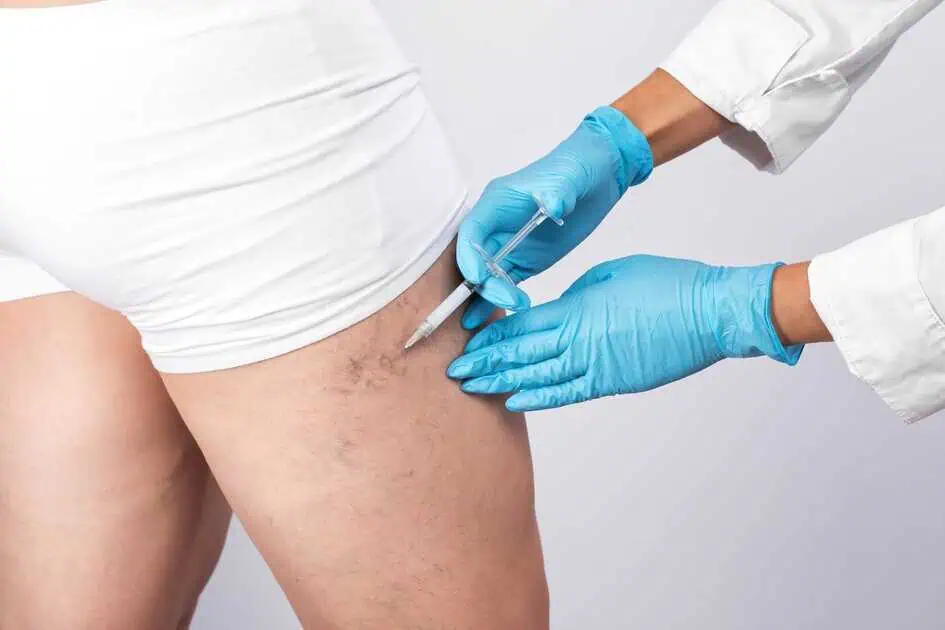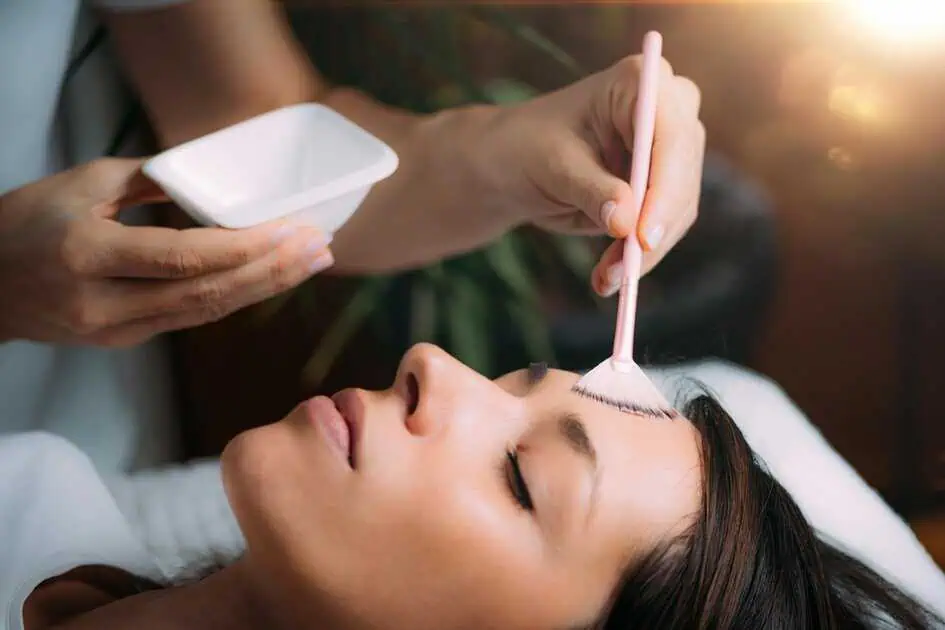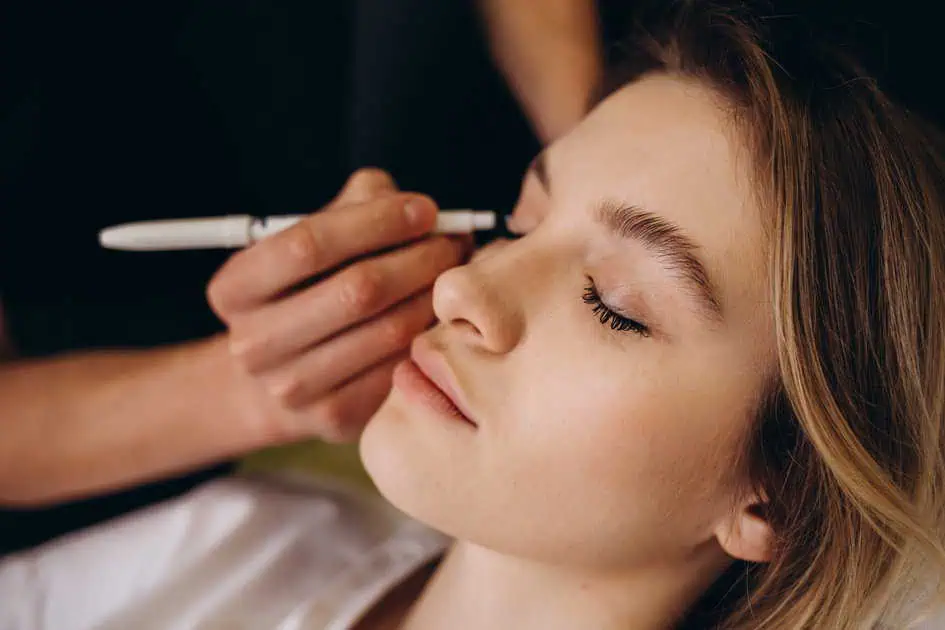The eyes have always been considered windows to the soul, captivating and revealing emotions with their enchanting gaze. Their significance in facial aesthetics cannot be overstated, as they hold the power to convey beauty, vitality, and youthfulness. Within this realm of enhancing one’s appearance, eyelid surgery, also known as blepharoplasty, emerges as a remarkable technique that can bring about transformative changes to the eyes.
By harnessing the power of eyelid surgery, one can unlock the radiant potential of their eyes, achieving a newfound sense of confidence and beauty. We aspire to empower readers with every word and section, equipping them with the knowledge necessary to embark on their transformational journey.
Join us as we unravel the secrets of eyelid surgery, unraveling the veil that shrouds radiant eyes and embracing the artistry of facial aesthetics.
The Basics of Eyelid Surgery
Blepharoplasty, or eyelid surgery, is an operation intended to improve and revitalize the appearance of the eyelids. It is a flexible treatment that can handle various aesthetic issues, producing outstanding outcomes that give the eyes a youthful and renewed appearance.
A fundamental aspect of understanding eyelid surgery is differentiating between upper and lower eyelid procedures. Upper eyelid surgery addresses sagging skin, excess fat deposits, and drooping eyelids that can give a tired or aged appearance. By carefully removing the excess tissue and repositioning or tightening the eyelid muscles, upper eyelid surgery can restore a more vibrant and awake appearance to the eyes.
On the other hand, lower eyelid surgery primarily targets under-eye bags, puffiness, and fine lines. This procedure involves removing or repositioning fat deposits and addressing sagging skin to achieve a smoother, more youthful lower eyelid contour. Lower eyelid surgery can significantly enhance overall facial aesthetics by eliminating the signs of fatigue and aging around the eyes.
The decision to undergo eyelid surgery is personal, driven by various common reasons. Many individuals undergo this procedure to combat the visible signs of aging, such as drooping eyelids, under-eye bags, and fine lines. Others may seek eyelid surgery to address functional concerns, such as impaired vision caused by excessive skin obstructing the upper eyelids. Furthermore, some individuals may opt for eyelid surgery to enhance their natural features, achieving a more symmetrical and harmonious facial appearance.
Upper Eyelid Surgery
Indications for Upper Eyelid Surgery
Upper blepharoplasty, commonly referred to as upper eyelid surgery, is a technique that tackles specific aesthetic and practical issues with the top eyelids. There are several common indications that prompt individuals to consider this surgery. These indications include:
- Excess skin: The top eyelid skin can sag and become loose due to aging, hereditary factors, and other factors. This excess skin can give the eyes a tired, aged appearance and may even obstruct vision in severe cases.
- Drooping eyelids: Ptosis, characterized by drooping or sagging of the upper eyelids, can be present from birth or develop over time due to aging, muscle weakness, or nerve damage. Upper eyelid surgery can correct ptosis and restore a more alert and youthful eye appearance.
- Puffy or bulging fat pads: Some individuals may have prominent fat deposits in the upper eyelids, causing a puffy or bulging appearance. Upper eyelid surgery can remove or reposition these fat pads, resulting in a smoother, more defined eyelid contour.
- An Overview of the Procedure
Upper eyelid surgery is typically performed as an outpatient procedure under local anesthesia with sedation. The surgeon begins by administering the anesthesia to ensure the patient’s comfort throughout the surgery.
The procedure involves several key steps:
- Incision techniques: The surgeon carefully plans and creates incisions in the upper eyelid’s natural crease. These incisions are strategically placed to minimize scarring and allow for the precise removal of excess skin and fat.
- Removal of excess skin and fat: The surgeon meticulously trims the excess skin and eliminates or repositions any excess fat contributing to sagging or puffiness. This step helps restore the upper eyelids’ youthful and rejuvenated appearance.
- Eyelid reshaping and tightening: After removing the excess skin and fat, the surgeon may reshape the remaining tissue to achieve a harmonious eyelid contour. Additionally, they may tighten the underlying muscles to enhance the eyelid’s overall firmness and support.
- Recovery and Post-operative Care
The recovery period following upper eyelid surgery is typically well-tolerated, with most individuals experiencing minimal discomfort. However, it is important to follow post-operative care instructions to ensure optimal healing and results. Here are some critical aspects of recovery and post-operative care:
- Managing discomfort and swelling: Some swelling and bruising are expected after surgery. Cold compress and keeping the head elevated can help reduce swelling. They may prescribe pain medication to manage any discomfort during the initial days following the procedure.
- Medication and wound care: The surgeon may prescribe antibiotic ointment or drops to prevent infection and promote healing. It is crucial to follow the prescribed medication regimen and keep the incision sites clean to minimize the risk of complications.
- Follow-up appointments: Regular follow-up appointments with the surgeon are essential for monitoring the healing progress and ensuring optimal results. The surgeon will assess the incisions, remove any sutures if necessary, and provide further guidance on activities to avoid during recovery.
Lower Eyelid Surgery
Indications for Lower Eyelid Surgery
Lower blepharoplasty is a surgical procedure addressing various cosmetic concerns concerning the lower eyelids. Common indications that prompt individuals to consider lower eyelid surgery include the following:
- Under-eye bags: Fat accumulation and fluid beneath the lower eyelids can result in unsightly bags, contributing to a tired or aged appearance. Lower eyelid surgery can remove or reposition these fat deposits to achieve a smoother and more rejuvenated lower eyelid contour.
- Sagging skin: Over time, the skin around the lower eyelids may lose elasticity, leading to sagging or loose skin. This can create the appearance of wrinkles, fine lines, and a tired look. Lower eyelid surgery can tighten and remove excess skin, resulting in a younger and fresher appeal.
- An Overview of the Procedure
- Local anesthesia and sedation: The surgeon administers local anesthesia and sedation to ensure patient comfort during the procedure. This allows the patient to remain relaxed and pain-free throughout the surgery.
- Incision techniques: Two primary incision techniques are employed in lower eyelid surgery – transcutaneous and transconjunctival. Transcutaneous incisions are made just beneath the lower eyelash line, allowing direct access to remove excess skin and fat and address sagging. Transconjunctival incisions are made on the inner side of the lower eyelid, and they are suitable for cases where excess fat removal or repositioning is the primary focus, without the need for skin tightening.
- Fat repositioning or removal: In cases where there is excess fat causing under-eye bags, the surgeon can either reposition the fat to fill hollow areas or remove the excess fat entirely. This step aims to create a smoother and more natural lower eyelid contour.
- Addressing under-eye bags and sagging skin: After fat repositioning or removal, the surgeon addresses any sagging or loose skin. Excess skin is carefully trimmed, and the remaining skin is tightened and re-draped to create a more youthful and rejuvenated appearance.
- Recovery and Post-operative Care
Proper recovery and post-operative care are crucial for optimal healing and results following lower eyelid surgery. Here are vital aspects to consider:
- Managing bruising and swelling: Some bruising and swelling around the lower eyelids are expected after surgery. Cold compress and keeping the head elevated can help minimize these effects. The surgeon may also prescribe medications or recommend topical treatments to manage bruising and swelling during recovery.
- Protecting the eyes during healing: Protecting them during the healing process is essential. The surgeon may advise avoiding activities that strain the eyes, such as reading or using electronic devices for extended periods. Additionally, protecting the eyes from sun exposure and wearing sunglasses can aid in the healing process.
- Long-term results and maintenance: Lower eyelid surgery can provide long-lasting results. However, maintaining a healthy lifestyle, including proper skincare, protecting the delicate eye area from sun damage, and avoiding smoking, can contribute to preserving the results for the long term.
Combined Upper and Lower Eyelid Surgery
Comprehensive Rejuvenation of the Eyes
Combined upper and lower eyelid surgery, also known as comprehensive blepharoplasty, offers a transformative approach to achieving comprehensive rejuvenation of the eyes. By addressing both the upper and lower eyelids in a single surgical procedure, individuals can achieve harmonious and balanced results that enhance the overall appearance of their eyes.
Benefits and Considerations of Combining Procedures
Combining upper and lower eyelid surgery offers several benefits. First and foremost, it allows for a comprehensive approach to rejuvenating the entire eye area, addressing multiple concerns simultaneously. By treating the upper and lower eyelids together, the surgeon can achieve a more balanced and harmonious outcome, ensuring that the upper and lower eyelids complement each other seamlessly.
Additionally, combining procedures reduces overall downtime and recovery periods. Instead of undergoing separate surgeries with separate recovery periods, individuals can consolidate their recovery into a single timeframe, allowing them to resume their normal activities sooner.
It is important to note that combining upper and lower eyelid surgery requires careful consideration and evaluation by a qualified surgeon. The decision to combine procedures will depend on individual factors such as the extent of eyelid aging, anatomical considerations, overall health, and the patient’s aesthetic goals. A thorough consultation with the surgeon is essential to assess candidacy for combined surgery and determine the most appropriate surgical plan.
Preparing for Combined Eyelid Surgery
Preparing for combined eyelid surgery is similar to individual upper or lower eyelid procedures. The first step is to consult a qualified surgeon specializing in eyelid or oculoplastic surgery.
Pre-operative instructions may be provided, such as refraining from certain medications, adjusting dietary habits, and ceasing smoking, to optimize the surgical outcome and minimize potential risks.
Recovery and Post-operative Care for Combined Procedures
The recovery and post-operative care for combined upper and lower eyelid surgery are similar to individual procedures. Patients are typically advised to use cold compresses, keep their heads elevated, and avoid strenuous activities during the initial recovery period.
The surgeon may prescribe pain medication and provide specific instructions on wound care and medication usage.
Patients must adhere to post-operative care instructions, including protecting the eyes from sun exposure, avoiding strenuous activities, and following the surgeon’s recommendations for skincare and hygiene. By closely following the recovery guidelines and attending all follow-up appointments, patients can optimize their healing process and achieve the desired outcomes from their combined eyelid surgery.
When to Consider Eyelid Surgery?
Blepharoplasty is a cosmetic procedure that can address various concerns related to the eyelids and surrounding areas. While the decision to undergo eyelid surgery is highly personal, there are specific indications and factors to consider when determining the right time to pursue this procedure. Here are some situations in which individuals may consider eyelid surgery:
- Excess skin and wrinkles: If the upper eyelids have significant sagging skin that hangs over the eyelashes, it can impair vision and create a perpetually tired or aged appearance. Eyelid surgery can remove excess skin, smooth out wrinkles, and restore a more youthful and refreshed appearance.
- Under-eye bags and puffiness: The lower eyelids may develop bags or puffiness due to fat and fluid accumulation. This can make individuals appear tired or older than they are. Eyelid surgery can address these concerns by removing or repositioning the fat, resulting in a smoother and rejuvenated lower eyelid contour.
- Impaired vision: In some cases, excessive skin on the upper eyelids can obstruct the visual field, causing vision impairment. If the sagging eyelids interfere with daily activities or affect the quality of life, eyelid surgery can help improve vision by removing the excess skin and restoring proper eyelid function.
- Eyelid asymmetry: Natural asymmetry between the eyelids is common, but in cases where the asymmetry is significant and affects one’s self-confidence, eyelid surgery can help achieve better symmetry and balance between the upper and lower eyelids.
- Premature signs of aging: Genetics, lifestyle factors, and other variables can contribute to premature signs of aging around the eyes. If individuals are bothered by these signs, such as drooping eyelids, wrinkles, or under-eye bags, eyelid surgery can help reverse or minimize these effects, restoring a youthful appearance.
- Psychological impact: Eyelid concerns, such as sagging skin or under-eye bags, can impact an individual’s self-esteem and confidence. If these concerns significantly affect one’s self-image and overall well-being, eyelid surgery can boost self-confidence and improve psychological well-being.
Conclusion
Eyelid surgery offers a remarkable opportunity to achieve radiant eyes and restore a youthful appearance. It is a personalized journey that requires careful consideration, consultation with a qualified surgeon, and realistic expectations. While risks and complications exist, they are rare, and with proper pre-operative evaluation and post-operative care, they can be minimized.
Remember, this guide is a starting point for understanding eyelid surgery but is not a substitute for professional medical advice. We encourage readers to continue their research, consult reputable surgeons, and gather all necessary information before deciding.
Take the first step towards achieving radiant eyes and reclaiming your youthful confidence. Schedule your consultation at The Graivier Center today, and let us guide you through your eyelid surgery journey. Experience the expertise, care, and transformative power that have made us a trusted name in plastic surgery.
Unlock the beauty of your eyes with The Graivier Center. Your journey to radiant eyes begins here.
Call us to schedule your consultation and learn more about our exceptional eyelid surgery services.



















